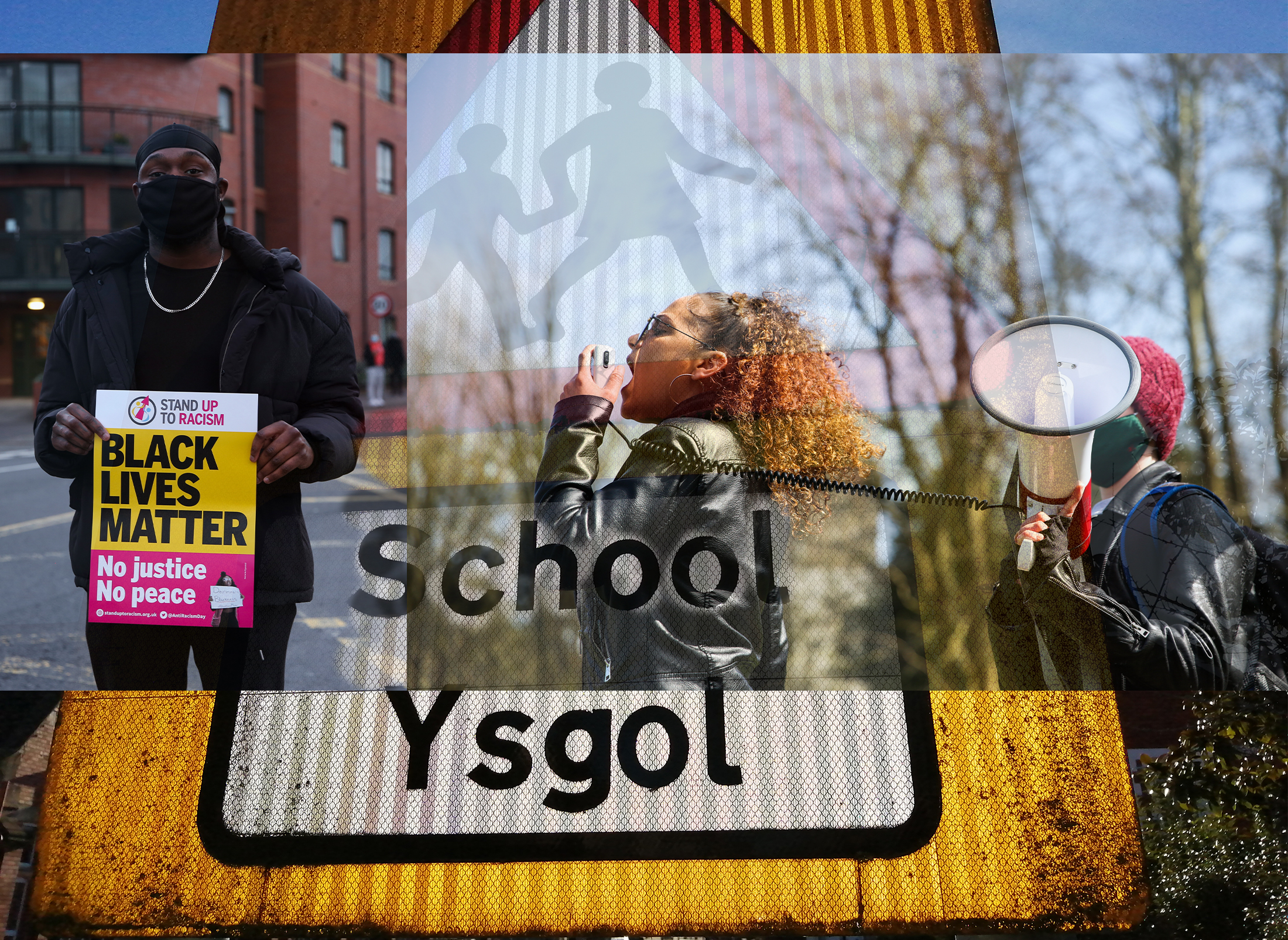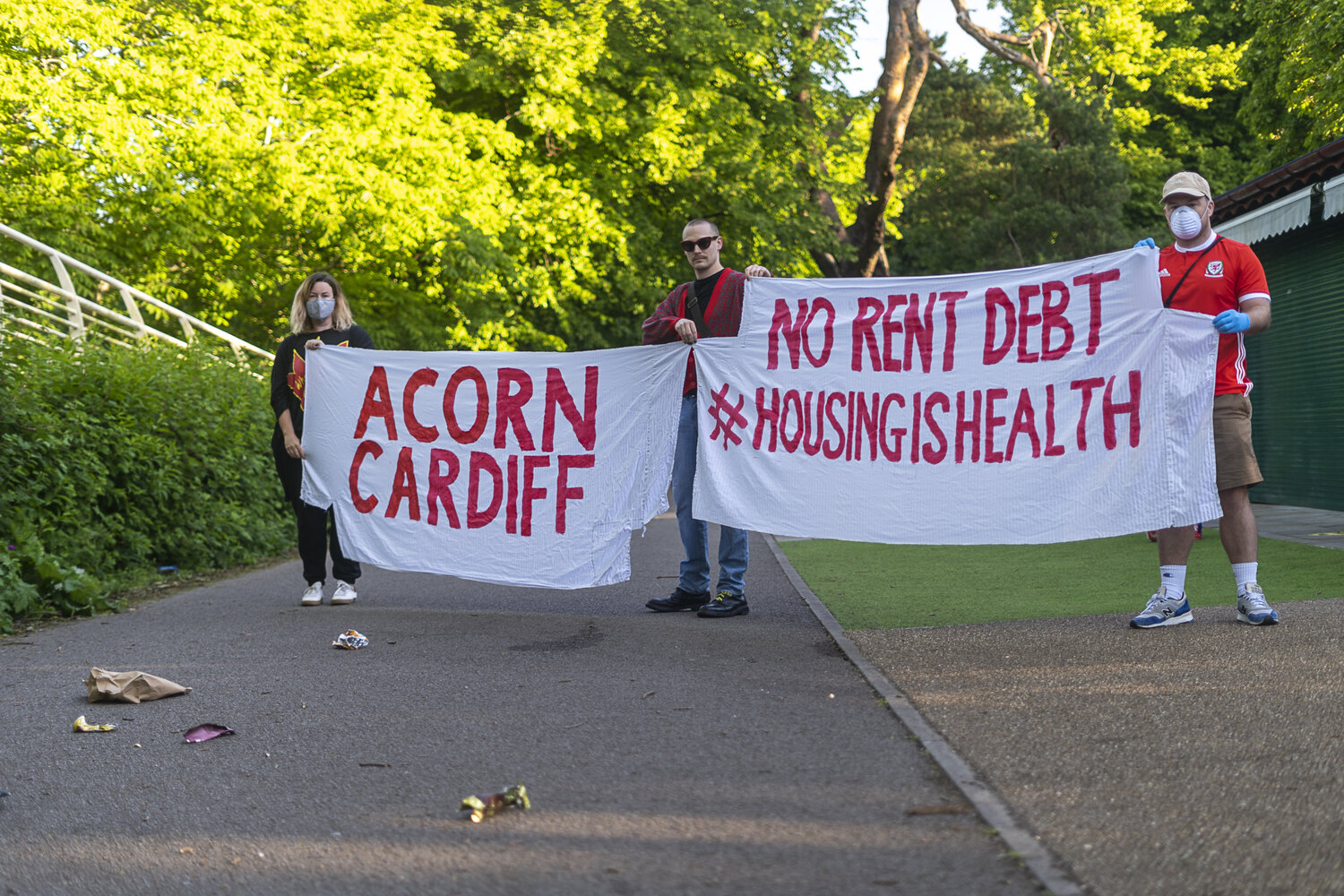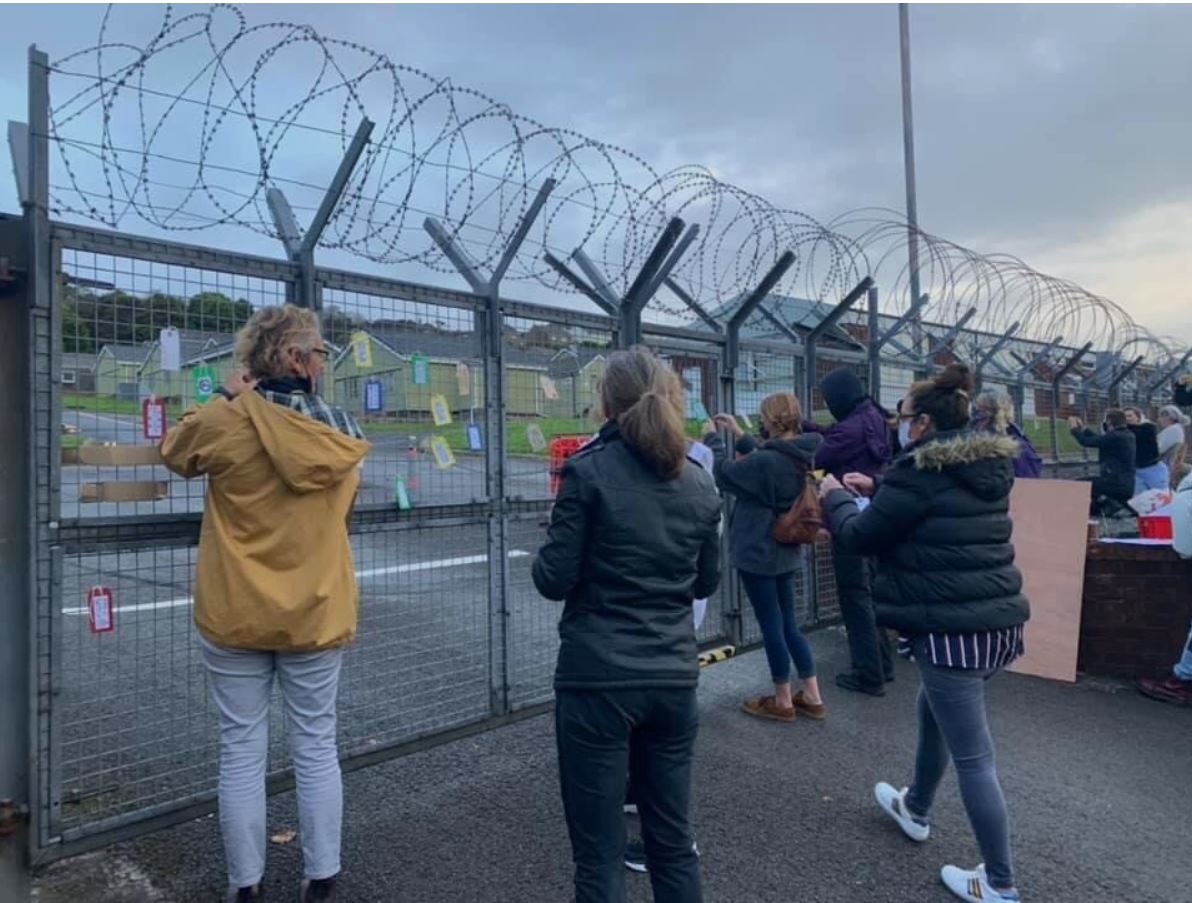
Exposed: The Reality Of Racism In Wales’ Education System
A major piece of research led by Race Alliance Wales has exposed the extent of racism in Welsh schools and the cumulative impact this can have on young people. With a new curriculum on the horizon in Wales and a new generation of young people who are being inspired by Black Lives Matter, F Clark spoke to students on the frontline and considers what needs to change in the Welsh education system if Wales is to one day become truly anti-racist.
Since the death of the Black man George Floyd at the hands of white police officer Derek Chauvin in the U.S. last year, the Black Lives Matter (BLM) movement has taken Wales and Britain by storm, with many young people – from a range of backgrounds – showing solidarity at protests.
BLM has seen fresh attention given to the education system in Wales and what does and doesn’t find its way into the syllabus, however the extent of racism in Welsh schools has recently been highlighted by a research paper published by Race Alliance Wales (RAW).
The Show Us You Care report explores the cumulative impact of racism upon racialised young people in the Welsh education system. It also assesses experiences of racism at different stages of the education system, and the nature in which these changed throughout an individual’s educational journey.
Lifting the lid on racism in Welsh schools
For example, while racist instances were experienced less in primary school, racialised children were still picked on and called names such as ‘poo-poo head’ and ‘chocolate shark’, the latter occurring when one young person was swimming with classmates.
Some young people also shared stories of being the only child in their class to not be invited to birthday parties, and many spoke of a resounding sense of being ‘othered’ or called out as being different from a very young age.
In secondary schools, young people again experienced name-calling based around racial and religious characteristics, though this time it was clear that the name-calling was with intent, with racialised young people being called racial slurs such as the P-word, N-word, and terms such as ‘curry munchers.’ Instances of Islamophobia were also rife, with one girl experiencing having her hijab pulled off, and many being referred to as ‘Terrorists’, ‘Bombers’ and ‘Extremists’.
One thing that sets this report apart from others is that it was carried out by four volunteer peer researchers, all of whom are young people from racialised backgrounds themselves. Nirushan Sudarsan was one of the peer researchers for the report. He says the research “shines a light” on the prevalence of racism in schools, and that it shows that “we haven’t found a way of dealing with [racism], understanding the problems, and putting things in place.”
Asked if he could relate to the experiences shared by pupils in the report, Nirushan replied “definitely.”
“I think things have changed, and things do improve over time, but I think, you know, it’s very similar,” he adds. “They [pupils] were really open in talking to us because, you know, we literally went through the same things. So I think, yeah, I think it’s definitely something I can relate to and understand to a certain extent, what they went through.”
The report revealed experiences of both overt and covert instances of racism. Many students expressed concern about an increase in covert expressions of racism – microaggressions that were not as overt as racial slurs, but that prove to have just as damaging an impact, especially on those still in education.
These included being put in isolation for wearing braids, having hair touched repeatedly, or being asked “are you from Africa?” There were clear examples of institutional racism, too. Many young people interviewed by RAW reported first-hand experiences and relayed instances from friends in other secondary schools where they felt assessment had been biased. For example, being predicted lower grades and entered for lower tier exam papers, despite achieving similar grades to white peers up until that point.
Some of the young people interviewed also noted examples of when teachers would not allow them to communicate in their mother tongue, a restriction which extended to lunch breaks, and, in some instances, to young people who had only recently arrived in the UK and were still learning English as an additional language.
“It is incredibly common for racial slurs to be shouted across the yard.”
RAW’s research underlines how multiple and repeated experiences of racism – regardless of how big or small these are and whether they occur in primary school or higher education – have “a lasting and often traumatic impact on young people, impacting on their long-term mental health, identity and aspirations for the future.”
However, the sad reality is that for many of these young people, these negative experiences are intensified by a lack of intervention on schools’ behalf. In RAW’s report, those interviewed felt teachers’ and schools’ responses to racist incidents were poor.
The young people interviewed expressed that many teachers seemed ‘clueless’ about racism, finding it an uncomfortable subject as “they don’t really understand racism themselves,” as one young person puts it. “They are quite old-fashioned, and they don’t really see it as a big deal.”
This is echoed by a student voice.wales spoke to from Fitzalan High School, one of Cardiff’s most ethnically diverse schools. The student reached out to us anonymously following a report about pro-Palestinian activism in the school. We’re calling them Layla.
“It is incredibly common for racial slurs to be shouted across the yard and yet very little is done about it. The only time we are educated on topics like racism is via teachers who are passionate about the topic or when they [teachers] are forced to by the students.”
RAW’s research also found that when young people did go to the effort to report racist incidents, researchers “heard repeatedly that schools did not respond effectively.”
Young people reported that they often felt there was a “burden on the victim of the aggression to provide concrete evidence of the incident” and this often led to victims feeling that they wouldn’t be believed or taken seriously, sometimes leading to them feeling that there was ‘no point’ in reporting incidents at all.
There were some positive examples of teachers reacting quickly to incidents in RAW’s report, however, many of these relied on evidence. For example, one young person shared an experience of an older student passing him in the school corridor, turning to say, ‘You’re a refugee’, and then spitting on the floor.
The incident was dealt with swiftly, thanks to it being caught on CCTV, however, as RAW explains, had the student said ‘you’re a refugee’ and not spat on the floor, the school wouldn’t have taken one student’s word over another, thus indicating how the burden of evidence still remains on the victim of racism.
Layla also felt that some teachers treated ethnic minority students differently to their white peers. “When a brown or black student gets into trouble, the offence tends to be much more minor and the punishment is much harsher than when a white student gets into trouble,” she explains. “For example, numerous Asian or African students in my class have had their phones taken away, are sent to the head teacher or are given behavior points without a warning, whereas the White students get multiple chances before something is done.”
Britain’s colonial past ‘white washed’ in education.
Institutional racism is widely documented in numerous reports on the Welsh education system, and evidence of this can be seen in educational attainment rates and predicted gradings. There is also evidence of higher exclusion and intervention rates amongst Black and Mixed Ethnicity pupils – particularly young males.
This disproportionality manifests outside of the education system too. The latest figures for England and Wales show that Black people are 9 times more likely to be stopped and searched by police than White people, while Black people are also over 3 times as likely to be arrested as White people. Black people in the UK are also more likely to be unemployed and live in poverty.
This systemic racism, fostered by government and the state’s persecution of certain groups of people, was precisely what the Black Lives Matter movement took aim at, and why it is still seen as a threat by the Tories in particular.
When it comes to the Welsh education system, the problems go deeper than overt instances of racism and racial slurs. One of the major flaws that has recently been outlined by the BLM movement is the failure of Welsh and British schools to adequately cover Black and people of color histories in the curriculum.
Layla also mentions the lack of attention afforded to Britain’s colonial past which paved the way for the institutional racism present today. Such events “are white-washed by the school” Layla adds, “in efforts to promote ‘neutrality.’”
Not only this, but when pupils have tried to draw attention to the issues that matter to them, such as the plight of Palestine or the Black Lives Matter movement, she says they’ve been met with dismal responses.
Despite pupils even sending emails asking teachers to declare solidarity with the Black Lives Matter movement last year, Layla says there was no initial response or interest displayed by certain teachers, and that pupils “were all frustrated” at the lack of care given to issues in regards to Black or Asian communities, despite being a diverse school.
Fitzalan High did not respond to a request for comment, but the school did produce a video in support of the movement against racism called We Stand Together in July last year.
Anti-racism in education
RAW’s report highlights a myriad of recommendations that schools should adopt in order to fight racism, including becoming actively anti-racist.
The report suggests that the culture of some institutions needs to change, with one pupil underlining a need for schools to “[show] that they care and they’re willing to really push to correct this type of behaviour…if you feel like you can’t even talk to the teacher about your experience, then what can they really do you know?”
From testimonies included in RAW’s report, it seems like schools are still hesitant to outwardly declare themselves anti-racist. For some institutions, there’s certainly a sense that this would be seen as too political or that schools should remain “neutral”. However, this again indicates a misunderstanding of the extent of racism and how it operates covertly in society so that no institution is free of it.
RAW’s report includes recommendations for a more representative curriculum and improved mechanisms for reporting racist incidents, and also highlights the need for an increase in efforts to inspire, recruit and support racially diverse educators. According to the 2019-20 school workforce census, less than 1% of teachers in Wales say they are Black, Asian, or from ‘other’ or mixed minority ethnic backgrounds. In addition to this, just forty of the 1,065 students who began teacher training in Wales in 2018-19 said they were from a minority ethnic group.
After a string of Black Lives Matter protests across Wales last year, close to 35,000 people signed a petition calling for Britain’s colonial past to be taught in school lessons. In 2022, a new Welsh curriculum for young people aged 3-16 will be rolled out across the country, and this will be based on six “areas of learning and experience.”
While the new curriculum framework does not set out exactly what schools should be teaching, recent changes – spurred by the Black Lives Matter movement – will mean that the curriculum will need to reflect diverse experiences and contributions of BAME communities and individuals both in the past and present in Wales.
However, earlier this year, Professor Charlotte Williams highlighted that there was a danger of schools continuing to ignore or marginalise BAME histories if they are not made mandatory in the new curriculum. While learning about diversity, identity and equality will be mandatory under the new curriculum, there is no requirement for schools to teach pupils about slavery, the British Empire, or the Holocaust – topics which Prof Williams describes as being of “central understanding to the histories of racism and diversity“.
For Nirushan, the new curriculum won’t solve racism in education and elsewhere in society, “but it is a step in the right direction” he says. “I think it’s one of the steps that we can take to make sure Wales becomes an anti-racist nation where every pupil feels supported and feels represented, and feels empowered that they feel and belong as part of Wales.”
RAW’s report indicates that there is a long way to go and that Welsh Government could do much more. There are a wealth of resources – including working groups such as Prof Williams’, and recommendations from alliances such as RAW, for the Welsh Government to now implement a curriculum framework – and encourage a new generation of teaching professionals – that is more representative of Wales’ population.
All this takes place under a backdrop of huge cuts to education in Wales since 2010, as Tory austerity has been passed down by Welsh Government, leaving many schools with barely any resources and staffing problems. Wales’ biggest teaching union, NEU Cymru, have been fighting against the impact of cuts, but also have their own anti-racism charter. Among other things the charter offers advice on “how to tackle racism with children, young people and staff” in schools.
Sadly, the reality right now is that many young people in Wales who have been victims of racism will be forced to carry this trauma with them, and RAW’s report indicates that this can have a devastating impact on their self-esteem, confidence, and even the career route they choose. The impact of such events is also compounded if pupils have not had the support and intervention they should have from schools and mental health services, which themselves have been cut by austerity.
Some of the pupils interviewed in RAW’s report mentioned the fact that they have to work ‘three times as hard’ in order to succeed and compete with white counterparts, and nearly every young person interviewed expressed concerns about employment prospects for the future, with many fearing that racism will continue throughout all of their lives.
While the new curriculum does provide significant scope for change to the education system in Wales, it is the young people marching on the streets, signing petitions, talking on social media and organising themselves on campus that are the driving force for change.
For Nirushan, the Black Lives Matter movement has provided young people facing racism with hope: “[During the research] there were lots of obviously very distressing things that we talked about, and challenging things of stereotypes, prejudice and racism that [pupils] faced,” he says.
“But they also talked about activism and how they felt hope in seeing young people march and demand change. I think, you know, that gives us all hope in going forward.”
Voice.wales contacted Fitzalan High School for comment, but received no response.



1 Comment
Comments are closed.